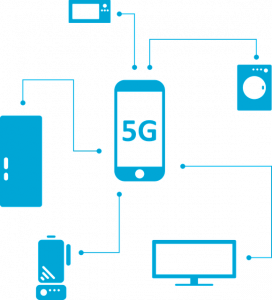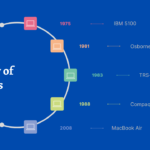Let’s explore each generation of mobile network technologies, from their humble beginnings to the high-speed connectivity we enjoy today.
-
19791GThe first generation of mobile networks, known as 1G, made its debut in Japan in 1979 before expanding to other countries, including the USA in 1980 and the UK in 1985. Utilizing analog technology, 1G provided basic voice call functionality. However, the mobile phones of this era were bulky and expensive, with limited network capacity and poor call quality. Additionally, these early networks were highly susceptible to interference, leading to frequent disruptions in communication.
-
19912GIn 1991, Finland’s Radiolinja launched the world’s first 2G network, utilizing the GSM (Global System for Mobile Communications) standard. This revolutionary network introduced a digital signal, significantly enhancing security and enabling new features like text messaging (SMS) and basic data services such as Multimedia Messaging Service (MMS).
In the late 1990s, the advent of 2.5G networks marked a significant enhancement to existing 2G technology with the introduction of GPRS (General Packet Radio Service). This upgrade utilized packet-switched technology to offer moderate-speed data transfer, enabling always-on internet connectivity. With data rates reaching up to 114 kbps, GPRS significantly improved the mobile internet experience -
20013GIn 2001, NTT DoCoMo in Japan rolled out the first 3G network using the WCDMA (Wideband Code Division Multiple Access) standard. This advancement brought significant enhancements, offering data transfer rates up to 2 Mbps, enabling video calling, and providing access to mobile internet. With these faster data speeds, users could browse the web, access emails, and download basic applications with ease. Additionally, 3G networks facilitated video calling and multimedia messaging services (MMS), enriching the overall communication experience and setting the stage for future mobile innovations.
-
20094GIn 2009, TeliaSonera launched the first 4G LTE network in Scandinavia, marking a significant milestone in mobile communications. This new generation of network offered very high data rates of up to 1 Gbps, improved spectral efficiency, and an IP-based architecture that supported high-definition video streaming and gaming. The advent of 4G enabled users to enjoy seamless HD video streaming, online gaming, and video conferencing, fueling the widespread adoption of smartphones.
These devices were perfectly suited to leverage the capabilities of 4G, leading to the rise of data-intensive applications such as social media, music streaming, and navigation apps. Consequently, the industry shifted its focus towards expanding network capacity and enhancing efficiency to meet the burgeoning demand for data. -
20185G

South Korea led the way in 5G technology by becoming the first country to offer it in March 2019, with major telecom providers KT, LG Uplus, and SK Telecom driving the rollout. In Canada, 5G has already been introduced in major cities.
This next-generation technology boasts features such as ultra-high data rates reaching up to 10 Gbps, remarkably low latency of just 1 ms, extensive device connectivity, robust support for the Internet of Things (IoT), and significantly enhanced mobile broadband capabilities.





